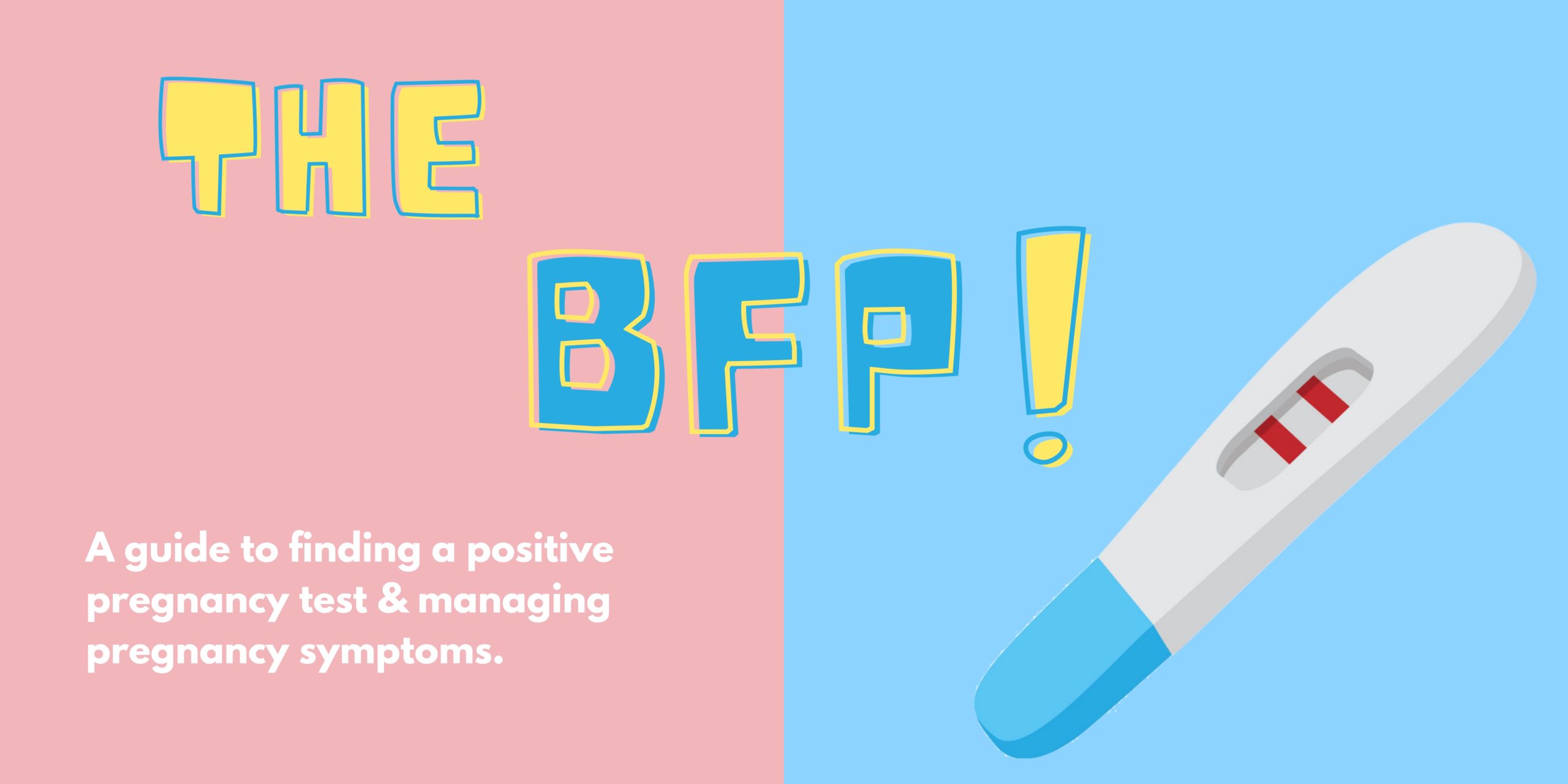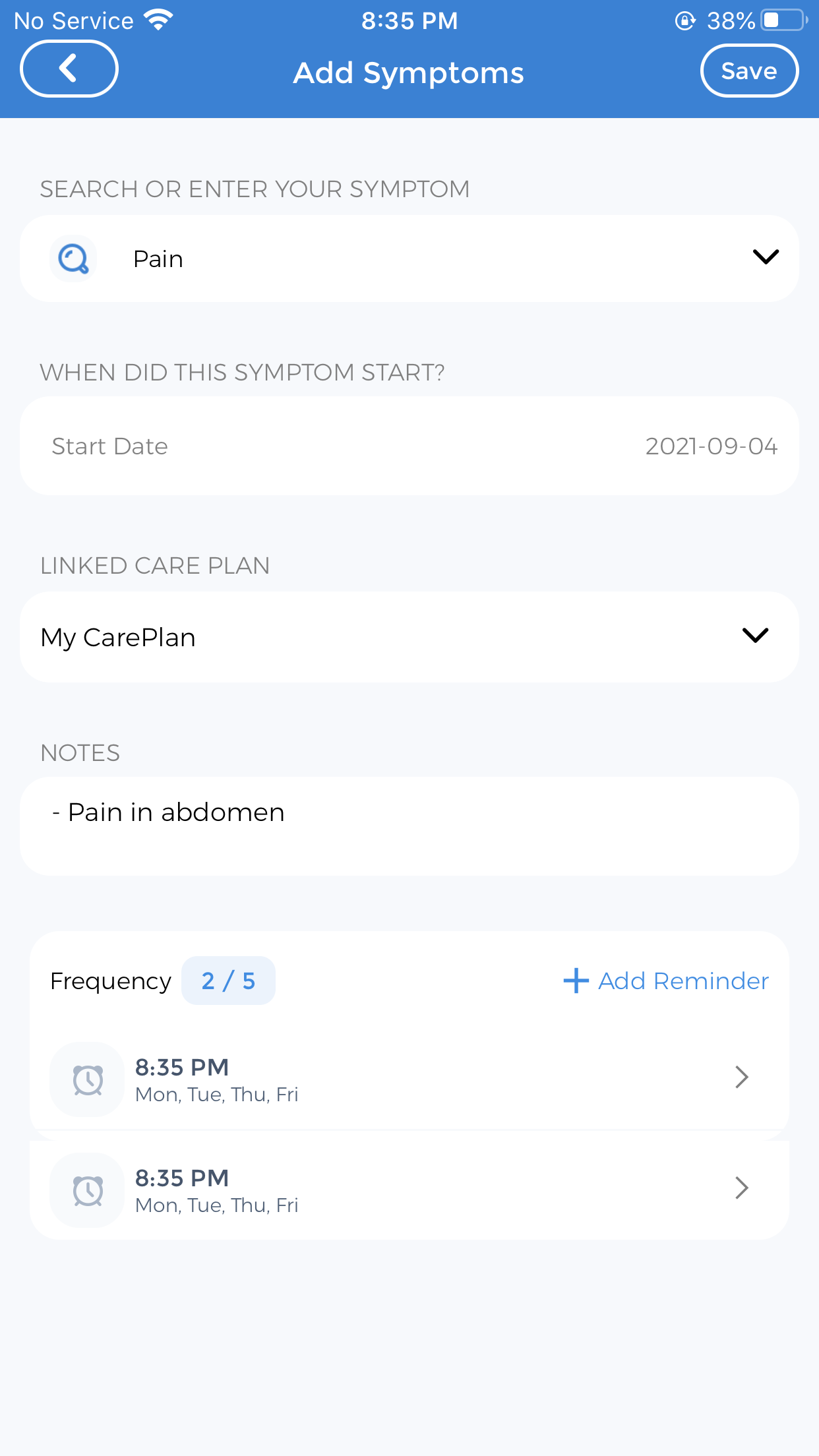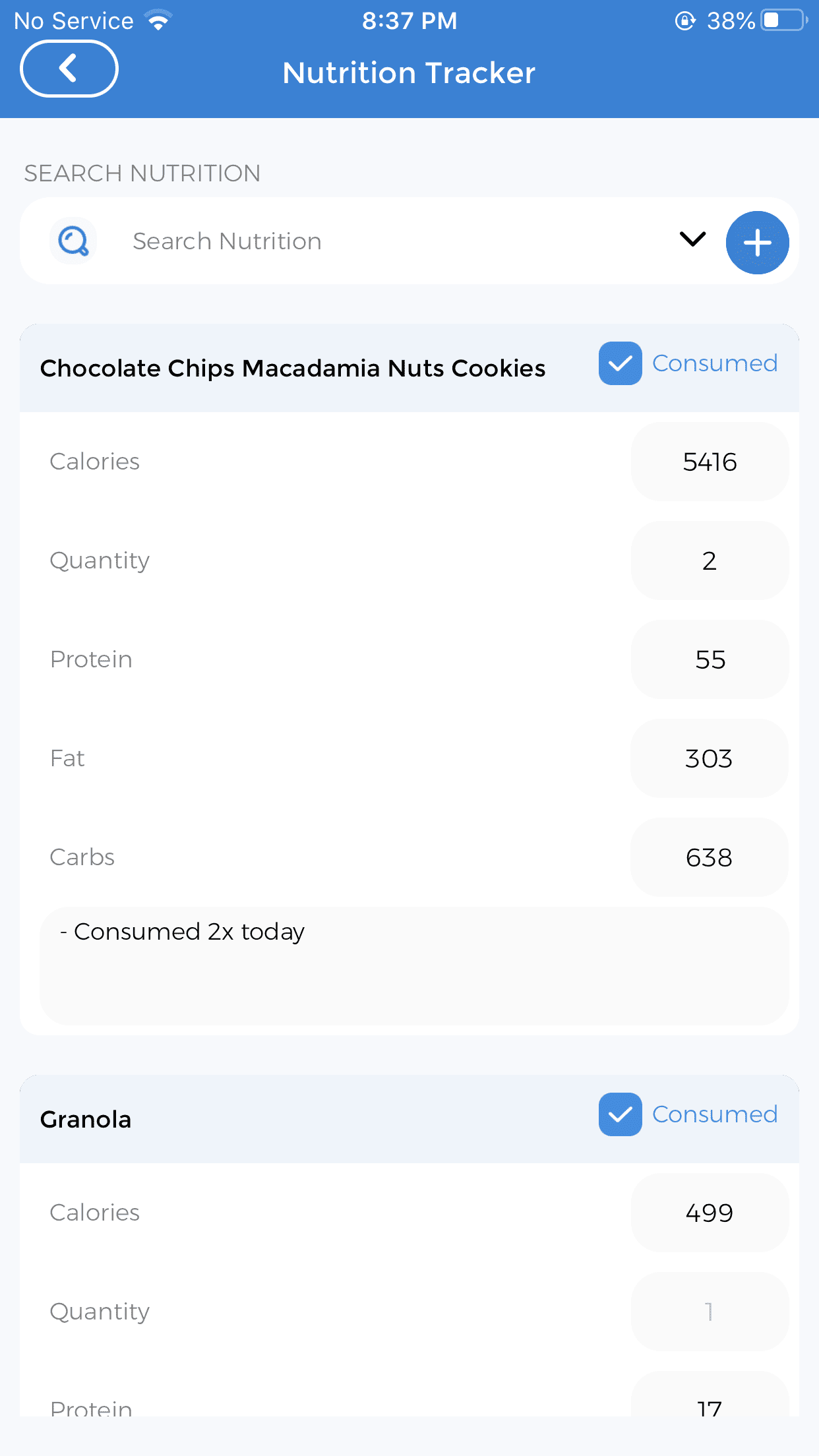
Are you a couple who is ready and excited to have a child? Or are you just a part of the trying-to-conceive (TTC) community and are thrilled about a BFP? You might need a bit more insight into the basics of parenthood and the complicated, yet exciting process associated with a bundle of joy. This article covers it all. From the initial conception to the importance of tracking details regarding your pregnancy. Read this article to get to know more about various methods of conception, symptoms associated with pregnancy, and the benefits of managing your conception with CareClinic.
What is BFP?
The process of having a child can be challenging and overwhelming for some. There are multiple details to remember and keep a track of. This is why fertility forums exist. The fertility forums are platforms created for women trying to conceive or those planning on having a child. Within these forums and message boards, there are many acronyms commonly used to make communication easier. BFP stands for ‘big fat positive‘. This acronym is usually used to celebrate getting a positive pregnancy result on a pregnancy test. A positive test generally shows two “big fat” blue lines indicating a woman is pregnant.
BFP Pregnancy Tests
The BFP brand of early pregnancy test was designed exclusively for the trying-to-conceive (TTC) forum communities. Most mainstream pregnancy tests are held under a stream of urine. BFP strips are dipped into a sample of collected urine instead of being held directly in the urine stream. The BFP test strip provides you with all the features TTC women care about in a pregnancy test. This test provides early detection, accuracy, ease of use, and affordability.
Features of the BFP Pregnancy Test
- Early Detection: Couples who are actively trying to conceive are eager to begin testing as soon as possible. The BFP pregnancy test strip is sensitive to testing the fluids present within your urine. The strip is sufficient to begin testing as early as four days before a missed period.
- Accuracy: The BFP Pregnancy Test Strip has an extremely high accuracy rate. This ensures false negatives are kept out of sight, which is frustrating for conceiving parents.
- Ease of Use: Many pregnancy tests are built with complications. It shouldn’t be hard to take a pregnancy test. The BFP test makes this process simple and effective. The instructions require you to rest the test strip in urine. Within just a couple of minutes, the results will appear. A single line indicates a negative test result. Two lines indicate a big fat positive!
- Affordability: BFP Pregnancy Test Strips are designed for compulsive testers in the trying to conceive community. Drugstore tests often range to an upwards price tag. Instead of breaking the bank, the BFP pregnancy tests provide safe, accurate and affordable – all in one test for a low cost.
How Does the BFP Pregnancy Test Work?
BFP pregnancy tests look for a special hormone that only develops in a woman’s body during pregnancy. This hormone is called the human chorionic gonadotropin (hCG). To test if a woman is pregnant, you either obtain a sample of urine or blood to identify the levels of hCG. This hormone is developed after a fertilized egg attaches to the wall of your uterus. Levels of hCG rise quickly, doubling every 2 to 3 days. At-home pregnancy tests are the most commonly used urine tests. When used correctly, home pregnancy tests concur accurate results.
Taking an at Home Test
The following tips are suggestions to receive the best possible results on an at-home pregnancy test.
- Using your first-morning urine when possible. This is the time of day when the hCG levels will be the most concentrated and easily detected.
- Avoid drinking excessive amounts of fluids before taking a pregnancy test. Although consuming an excessive amount of fluids might increase the volume of urine, it also has the possibility to dilute hCG levels.
- Read the directions that come with the test thoroughly before starting the test, and follow every step precisely to obtain the most accurate results.
Understanding BFN (Big Fat Negative)
Similar to BFP, BFN stands for big fat negative or a negative pregnancy test. For many women who are consistently trying this can be very disappointing news. But there is good news! Millions of women and men struggle with infertility and need help getting pregnant. There are many fertility treatments that can help increase the chances of having a baby. Fertility treatments often include medications that help with hormones and ovulation, and sometimes combine with minor surgical procedures.
Assisted Reproductive Technology (ART) describes several kinds of procedures that can an infertile woman conceive a baby. The Assisted Reproductive Technology (ART) procedures make it easier to implant an egg in a woman’s uterine lining. This is assisted through initial fertilization for sperm to an egg.
Assisted Reproductive Technology
Intrauterine Insemination (IUI): This is a fertility treatment that involves placing sperm inside a woman’s uterus to initiate fertilization. Through natural conception, sperm have to travel from the vagina through the cervix, into the uterus, and up to the fallopian tubes. A semen sample is washed by the lab to separate the semen from the seminal fluid. A catheter is then used to insert the sperm directly into the uterus. The goal of IUI is to increase the number of sperm that reach the fallopian tubes which increase the chance of fertilization.
IUI can be performed using a male partner’s sperm or donor sperm, depending on the fertility of the male if a couple is trying to conceive. The most common reasons for the usage of an IUI are low sperm count or decreased sperm mobility. This process maximizes the number of sperm cells that are placed in the uterus, thus increasing the possibility of conception. The IUI procedure takes only a few minutes and involves minimal discomfort.
The success of IUI depends on several factors. Success rates may reach as high as 20% per cycle depending on variables such as age and fertility factors.
In-vitro Fertilization: This process involves retrieving eggs from a woman’s ovaries and fertilizing them with sperm. IVF involves combining eggs and sperm outside the body in a laboratory. The fertilized egg is called an embryo. Once an embryo or embryos form, they are placed in the uterus. The embryo is frozen for storage or transferred to a woman’s uterus. In total, this treatment takes between two to four weeks, the length of an ovulation cycle. IVF is expensive and invasive, so couples often try other fertility treatments first. These treatments may include using intrauterine insemination.
In-vitro Fertilization Steps
Stimulation: The process of IVF requires multiple eggs. Using multiple eggs increases the chances of developing a viable embryo. Normally a female body produces one egg. Additionally, using fertility drugs increases the number of eggs your body produces. Blood tests and ultrasounds further monitor the production of eggs.
Egg Retrieval: This is called follicular aspiration. It is a surgical procedure using anesthesia. An ultrasound wand guides a needle through the vagina. Then the needle is lead into your ovary, and into an egg-containing follicle. The needle suctions the eggs in the fallopian tubes and fluid out of each follicle.
Insemination: The male partner provides a semen sample. This can come from a sperm donor or a male of choice. Next, the sperm cells and eggs are mixed in a petri dish to develop an embryo.
Embryo Culture: The fertilized eggs are checked upon to ensure that they’re dividing and developing. The embryos also undergo testing for genetic conditions at this time.
Transfer: When an embryo grows big enough, it is planted. This normally occurs three to five days after fertilization. Implantation involves inserting a catheter into the vagina and into the uterus. A physician then releases the embryo into the uterus. 6 to 10 days later, the embryo implants itself in the uterine wall.
How to Increase your Chances of Getting a BFP?
Fertilization might seem like an easy concept but the process is a bit more complicated. Every cycle is different and unique to the person. Each month, there are a series of hormonal changes in a woman’s body that cause an immature egg in the ovary to grow and mature. The process spans about two weeks on average, beginning with a woman’s menstrual period.
Correct Timing
The best way to increase the odds of getting pregnant quickly is to make sure that you’re having sex at the right time in your menstruation cycle. With regular cycles, it is easy to predict a fertility window. Ovulation occurs around two weeks before a period. This means the fertile window will be seven days before the expected ovulation. This span applies to a regular menstruation cycle. If you have irregular cycles, it can be a little more difficult to predict when you will ovulate and when your fertile window will be.
Healthy Body
Most healthy couples will conceive within a year of actively trying to get pregnant. Although complications aren’t uncommon, if you lie in a younger age group and are unable to conceive, it might be a good idea to refer to a specialist or a family physician for further diagnosis. Improving diet and exercise habits are crucial to a healthy pregnancy. Additionally, quitting smoking and eliminating caffeine is an essential asset to a smooth-sailing pregnancy.
Symptoms Before the BFP
Pregnancy is a different experience for each woman. Some women may suspect they’re pregnant within the first few days of pregnancy, while others don’t notice anything until they miss a period. hCG hormone develops early after conception. Despite its early appearance in the process, it takes some time for the body to build up enough hCG to register on a pregnancy test.
There are several signs of early pregnancy or a big fat positive, not everyone will have all of these symptoms, and some women may not feel any of these things. Pregnancy symptoms throughout the entire pregnancy can vary dramatically between women.
BFP and Frequent Bathroom Breaks
During pregnancy, your body’s blood supply increases. The kidneys filter your blood and remove the extra waste. This waste leaves your body as urine. The more blood in your body, the more you will have to urinate.
Fatigue and BFP
This sign of pregnancy happens because of high levels of the hormone progesterone. Similar to other early pregnancy symptoms, fatigue tends to get better in the second trimester.
Morning & Night Sickness
Nausea can happen as early as two weeks into a pregnancy or it can start a few months after conception. Not everyone experiences nausea and there are various levels of nausea. About half of pregnant women have vomiting. Though nausea during pregnancy is fairly normal, it can be a problem if you become dehydrated.
Sore Breasts with BFP
The soreness may be similar to the way breasts feel before a period, only more so. Your nipples might also begin to darken and enlarge. This soreness is temporary and fades once your body familiarizes yourself with the increased hormones. You may also notice that your breasts have enlarged and your bra is tighter than normal.
Implantation Bleeding and BFP
Light bleeding (spotting) can be a sign that your embryo has been implanted in the lining of your uterus. Implantation takes place several days after conception. Implantation bleeding will look like small drops of blood or a brownish discharge from the vagina. It can start around the time of your regular period and can last for a few days to a few weeks.
Managing Conception Using Digital Health Solutions
It is nearly impossible to keep everything stored in our memory. From small details to larger monthly goals, we tend to forget things we need to keep track of. Tracking your health is valuable for yourself, those around you and if you got a BFP, for your child! Especially being a woman, your menstrual cycle is a necessary part of health variations for multiple reasons. When it comes to pregnancy and expectations or planning a family, recording your menstruation is a must to achieve your goal of getting pregnant.
CareClinic is an all-in-one personal health app, provides numerous valuable features to help you maintain a personal health record. Create a self-care action plan and log all medications, supplements, diet, physical activities, and therapies you receive. You can even set your own healthcare team that manages your health and pregnancy. Add your physician, obstetrician, registered nurse, and family members to keep them in the loop.
Digital Symptom Tracking

CareClinic has a user-friendly check-in option, where you can easily input all of your symptoms. Checking-in allows you to seamlessly maintain a record of how you have been feeling throughout the days. This also allows for more accessible communication with your healthcare professional, so you don’t forget to mention any of your symptoms. Consistency is key. Find the best time to write in the diary entry and stick to that regime regularly. Sticking to a routine will help identify accurate results and gather dependable logs, charts and correlations for you and your healthcare provider.
The symptom tracker lets you add any pre/post BFP symptoms you are experiencing. Including pregnancy, if you have any medical conditions or medications, you can start tracking your symptoms before seeking medical attention. Additionally, tracking your period days will allow you to get a comprehensive view of your menstrual cycle. This helps seek medical attention during pregnancy-related symptoms, which might lead to complications. By using the symptom ribbon, you are able to add your symptoms to the menu. You can also add any notes about how you are feeling. This is also a great section to include notes about what you think might be impacting the symptom.
The best part about tracking your daily activities, routines and symptoms are the concise logs presented in-app. You can then view it in a chart or log format. The correlations report makes it easy to determine if your symptoms are a result of certain trends or consumption of certain foods. Once you have added a symptom to our profile, you can revisit it for a quick re-entry.
Digital Nutrition Tracking

Use CareClinic to track your food intake every day to ensure that you are getting your appropriate nutrients in. As featured on the right, it is effortless for you to add your meals. You can even track your food if your meal prep by journaling it in the app ahead of time and checking it off as you eat. When you are pregnant, it is essential to keep track of your food to ensure adequate nutrition is taken for your baby’s wellbeing and yours. Meanwhile, this nutrition tracker will help identify your cravings and help you manage them. If you have a specific diet to change your food habit, you can follow your diet and reflect on how you can live a healthy life.
The CareClinic app also has an easily accessible drop-down menu that allows you to select any workout along with your nutrition tracker. This way, you can track the exercises you are completing and the number of sets you completed. You can look back to see if there are any correlations between your symptoms and any activity you may have participated in.
The CareClinic app is available on three different platforms for easy access. You can directly download it from the App Store for iOS users or Google Play for users with an Android device. Finally, the tools and resources are also available on the CareClinic website for users who prefer logging in using a desktop. All three interfaces are user-friendly and easy to access. So, what are you waiting for? Download the app now and start tracking your symptoms and daily activities to make your pregnancy more smooth sailing.


